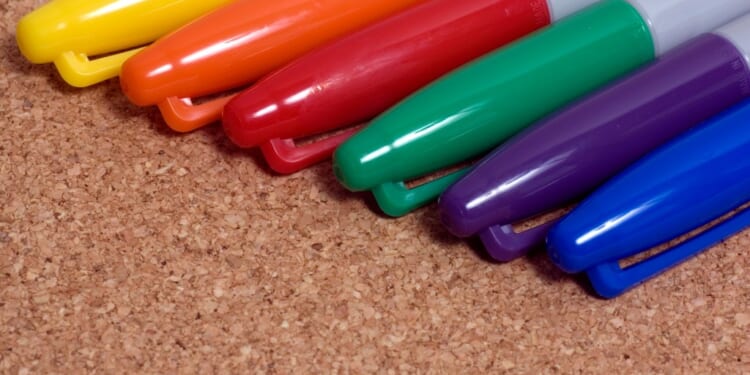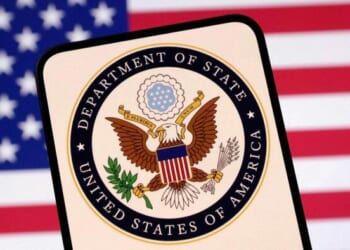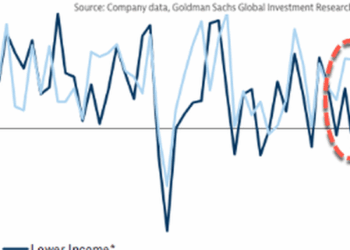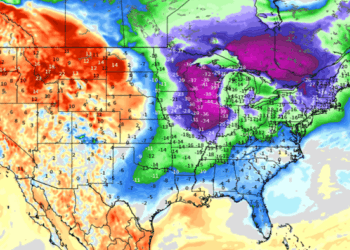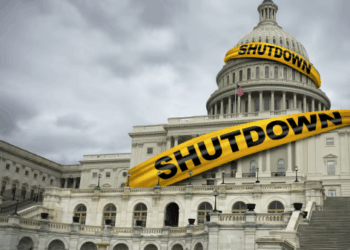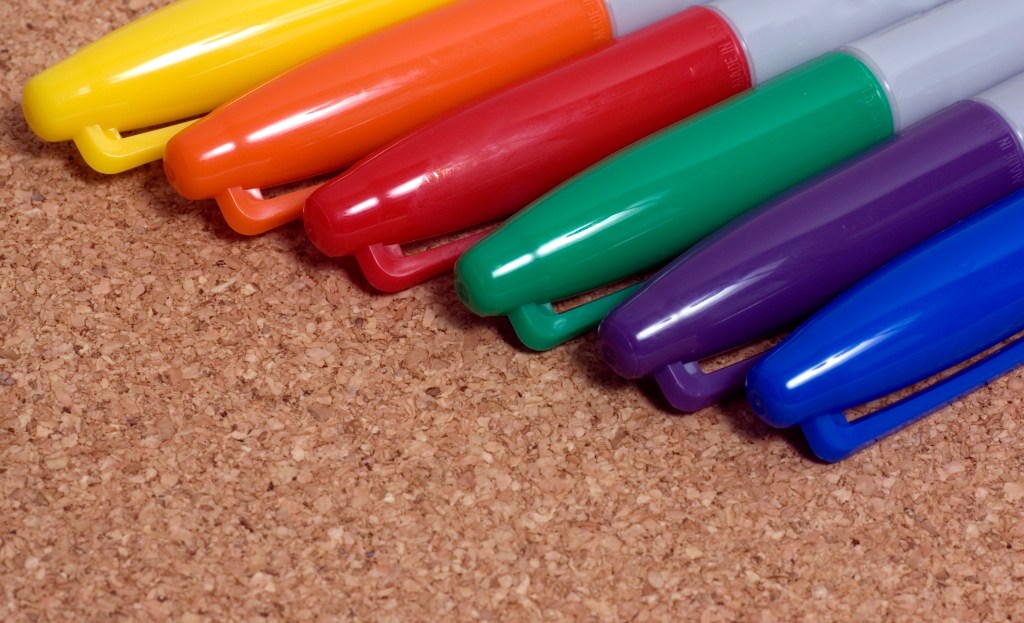
Chris Griswold, the policy director at the new right think tank American Compass, has written an essay titled “I, Sharpie.” Perhaps not surprisingly, given how so much of the new right is dedicated to salvaging old left ideas, “I, Sharpie” is supposed to be a pointed rejoinder to Leonard Read’s canonical free-market essay “I, Pencil.”
Longtime readers know I love that essay. For those who don’t know it, “I, Pencil” is written from the perspective of a specific pencil. It’s an almost poetic celebration of the way the spontaneous order of the free market can work to allocate resources without centralized planning.
It begins, “I am a lead pencil—the ordinary wooden pencil familiar to all boys and girls and adults who can read and write.”
The pencil goes on to explain that, “[N]ot a single person on the face of this earth knows how to make me. This sounds fantastic, doesn’t it? Especially when it is realized that there are about one and one-half billion of my kind produced in the U.S.A. each year.”
This is the fundamental point of the essay—even pencil makers don’t really know how to make a pencil from scratch. They just know how to put together the last few components of the supply chain. The global division of labor is so efficient that people from all over the world can cooperate, without necessarily coordinating, to produce a pencil for pennies. A decade ago, an intrepid YouTuber made a chicken sandwich truly from scratch—controlling (nearly) all of the inputs. It cost him $1,500 dollars and took six months. The sandwich was … fine. Artist Thomas Thwaites spent nine months working nearly full time to to make a toaster from scratch. It cost about 250 times what a conventional, cheap toaster cost. It was also a pretty crappy toaster.
In other words, extreme autarky and self-sufficiency is expensive, inefficient, and impoverishing for individuals—and maybe for nations, too.
This all seems utterly lost on Chris Griswold. He seems to think that because Chris Peterson, the CEO of Newell Brands, Sharpie’s parent company, figured out a way to manufacture Sharpies in the U.S., Read’s essay is now—or perhaps always has been—somehow irrelevant or obsolete.
In “I, Sharpie,” the marker mocks Adam Smith’s concept of the “invisible hand” by smugly observing it has never “seen any invisible hands fix a single machine.” It also suggests its personal history reveals an “astounding fact”: “[B]usiness leaders decide where things are made, and policy can push them toward one decision or another. There is no mystery here, just political economy.”
“If the Sharpie thought that would astound economists,” writes Caleb Petitt of the libertarian Independent Institute, “it was wrong. Every economist knows that policies shape decision-making, and most economic research attempts to estimate the effects of policy on economic outcomes.”
Petitt’s rejoinder is good, and I agree with him entirely when he writes, “The point of Read’s essay is not that human skill, knowledge, ingenuity, or entrepreneurship do not matter. It also does not argue that government policy does not or cannot shape incentives to change human action. Yet these are somehow the takeaways that Griswold attacked.”
It shouldn’t surprise anyone that the policy director of American Compass wants to cast a celebration of markets and the global division of labor as a fuzzy-headed and outdated worldview. American Compass is dedicated to the idea that experts—experts who listen to American Compass—are better equipped at every important juncture to make decisions than the market. Therefore, any celebration of the free market needs to be peed on from a great height.
Still, I think Petitt misses perhaps the most salient rejoinder to “I, Sharpie.”
The Sharpie’s story is not that different from the pencil’s—because nobody knows how to make a Sharpie, either.
When Read wrote “I, Pencil,” the vast majority of pencils were made in the United States. While it’s not stated in the essay, it feels kind of assumed that the pencil-narrator was born in America. In fact, many of the pencil’s ingredients come from America, too: “My family tree begins with what in fact is a tree, a cedar of straight grain that grows in Northern California and Oregon.” The eraser, however, “is a rubberlike product made by reacting rapeseed oil from the Dutch East Indies [Indonesia] with sulfur chloride.”
“My ‘lead’ itself — it contains no lead at all — is complex,” the pencil writes. “The graphite is mined in Ceylon [Sri Lanka]. Consider these miners and those who make their many tools and the makers of the paper sacks in which the graphite is shipped and those who make the string that ties the sacks and those who put them aboard ships and those who make the ships. Even the lighthouse keepers along the way assisted in my birth — and the harbor pilots.”
Anyway, you get it—even if Griswold doesn’t.
Now, let’s consider the proudly 100 percent American Sharpie. Like the pencil in Read’s telling, a Sharpie is made up of six components.
Even the Wall Street Journal article that inspired all of this notes that the felt tip of the Sharpie is made in Japan. If Newell Brands was so determined to make Sharpies in the U.S., it says something that the company still couldn’t profitably make—or buy—felt tips on American soil.
The other five parts of the Sharpie are made in the U.S. of A.: the ink, the cap, the ink reservoir, the barrel, and the plug.
I think it’s good that five out of the six components of a Sharpie are put together in America, by Americans. But that hardly means these parts are 100 percent American. All of these components are made of other components, and all of those components are part of a global supply chain. The ink contains things like n-propanol, n-butanol, diacetone alcohol, and ethanol, plus dyes and pigments. I am happy to concede that Chris Peterson, the Newell Brands CEO, knows a great many things. I suspect he would concede that he doesn’t know how to refine n-propanol profitably at scale. His comparative advantage in the great sea of divided labor lies elsewhere.
I’m not enough of an industrial sleuth to track each one of these ingredients in a given Sharpie to its original source, but I can guarantee you the prices and availability of these chemicals is determined by a global market. (Newell Brands doesn’t name its suppliers, but odds are good that pigments are provided by companies like Birla Carbon, the world’s largest supplier of carbon black. Birla Carbon is headquartered in Bangkok. Its parent company’s headquarters is in Mumbai.) The same goes for all the plastics in a Sharpie. Plastic is part of a global petrochemical market, which means a Sharpie might feel all-American, but like most Americans, it’s actually a product of mongrel vigor with probably as much chemical DNA from Saudi Arabia, Russia, and Venezuela as from Texas.
The Wall Street Journal piece makes a great deal out of the fact that Newell’s CEO made the decision to bring in robots to do most of the packing without firing employees. Peterson “decided to keep the employees who knew the company and convert their jobs to roles such as automation engineering. In that case, an employee would fix a robot instead of packing a box.”
That’s great. And I salute Peterson’s commitment to keeping his employees and retraining them to fix robots. But where do the robots come from? Newell hasn’t publicly disclosed the firms used in the Sharpie plant, but it relies on lots of robotic companies for its other products (it owns Rubbermaid, Mr. Coffee, and a slew of other brands—few of which are made exclusively in America). And those robot manufacturers are based all over the place (of the top 10 such firms, just two are American). But even if Newell used only American-made robots for Sharpies, where do those robotics companies get their steel and other inputs? What supply chains do they rely on?
In short, whatever you think about the decision to put together the final six components—of a pencil or a Sharpie—in America, Read’s points still hold. The most relevant for our purposes is this: No person or no nation is smart enough, knowledgeable enough, or skilled enough to do it alone efficiently. The “invisible hand” is just another term for price signals. Diverse decision-makers look to prices as a way to allocate resources efficiently and profitably.
Bizarrely, Griswold claims that Peterson figured out how to onshore Sharpies without reference to “price signals.” This is ridiculous. If he didn’t pay attention to price signals, why make the tip in Japan? Why buy affordable robots instead of unaffordable ones? Any CEO who ignores price signals will not be a CEO for very long.
The Sharpie informs the reader that: “The lesson I have to teach is this: domestic production matters, and we can totally do it. We can innovate and benefit workers all at the same time. Merely organize society to act in harmony with this lesson.” Read in the most favorable light, I don’t have a massive problem with this claim which, again, is not in conflict with the lessons of “I, Pencil” if you understand “I, Pencil.”
But I do have a problem with the implicit claim that we can run America like a business, specifically like a Sharpie manufacturer. One weakness of this vision is that there’s no acknowledgement of another kind of American who doesn’t work at a Sharpie plant: the consumer. We could definitely replicate the miracle of the Sharpie if we don’t mind $3,000 iPhones and $50 avocados.
My bigger problem is that this is all just argument by anecdote (a form of argumentation frowned upon at American Compass when convenient). All that is required, according to Griswold and American Compass, is the application of will, and we can replicate Newell Brands’ success in any industry or endeavor. We just have to want it enough and give experts like them the power and authority to make these kinds of decisions on a national scale, via industrial policy of one sort or another. Create incentives where price signals don’t matter (spoiler: Price signals always matter) and we can have the kind of autarky American Compass wants with no trade-offs.
Guys, you’re not that smart. I don’t mean to be too harsh when I say that, because no one is that smart. The fatal flaw to this sort of thing isn’t a lack of intelligence, it’s an abundance of arrogance and power-worship.
Indeed, one of the differences between the pencil and the Sharpie is that the pencil is full of awe and humility while the Sharpie is arrogant and, frankly, a bit of an ass-kisser. “During my time in Tennessee,” he confesses, “I haven’t seen any invisible hands fix a single machine, but Mike [Newcomb, head of the Sharpie molding department] seems to be running things pretty well.”
Look, I’m sure Mike is a great guy and I think Chris Peterson should be proud of what he did. But they didn’t refute the invisible hand—they navigated the world of prices, supply, and demand, and managed to put the last six components of markers together in America. They still don’t know how to make a Sharpie—because nobody does.

